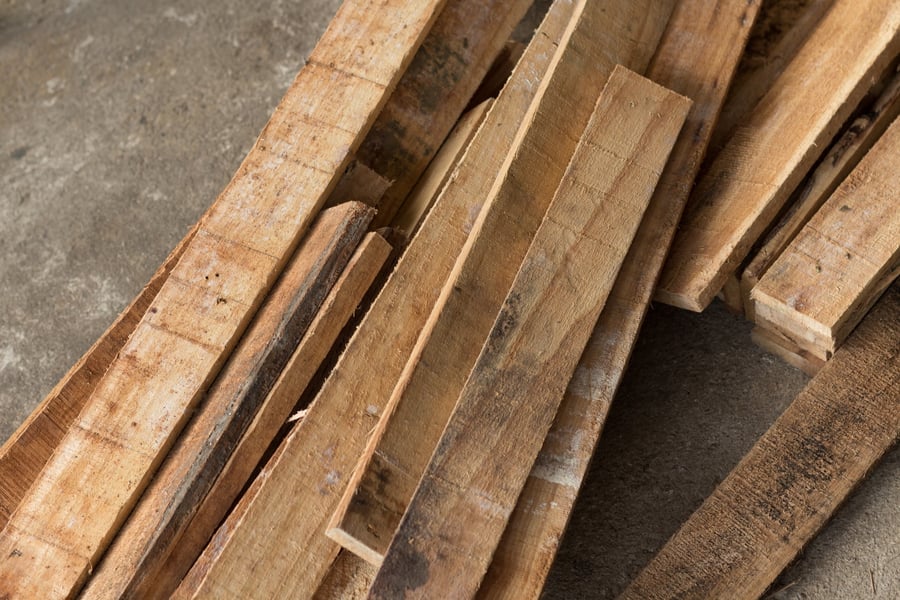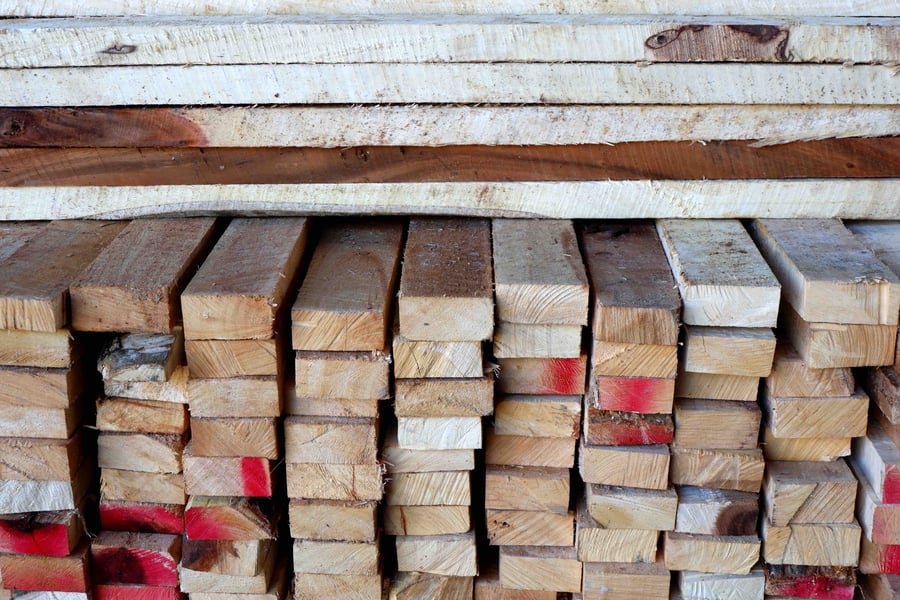Determining Distribution of Moisture in Board Lumber

For professionals who work with boards of lumber on a regular basis, such as lumber manufacturers, knowing not just the moisture content of wood, but the distribution of that moisture can be important.
Why? There are several reasons why knowing the distribution of moisture in a board might be important.
In solid wood boards, knowing the distribution of moisture in the board can help you gauge how long it will take the board to reach equilibrium moisture content (EMC). Moisture in the shell layers nearer the surface tends to dry out faster, while moisture in the core layer tends to take longer to dry.
This is especially important when kiln-drying wood, as knowing whether the moisture in a wood board is near the surface or buried deep in the core can help you avoid over- or under-drying the wood.
Determining the moisture distribution during the drying process before pulling the lumber is crucial ensuring stable wood for whatever process will be next, such as turning the lumber into furniture, flooring, or even building frames.
What You Need to Determine the Distribution of Moisture in a Board
 Before you can begin to measure the moisture gradient of a board, you will need a pin-type moisture meter with insulated contact pins. A pin meter with insulated pins is the best tool for measuring moisture at specific depths within a board.
Before you can begin to measure the moisture gradient of a board, you will need a pin-type moisture meter with insulated contact pins. A pin meter with insulated pins is the best tool for measuring moisture at specific depths within a board.
While a pinless meter does a great job at detecting the presence of moisture within a sample of wood, such meters scan through the entire cross section of the board within the scanning area and give a result based on that. Because of this, a pinless meter is not the right device for determining moisture gradient in wood.
By using insulated pins, you make sure that only the material near the tips of the pins is being tested, so surface moisture is not a factor in your results. With uninsulated pins, you might get a reading for the highest moisture content at any depth of the wood at the insertion site.
How to Determine Distribution of Moisture in a Board
Using a moisture meter combined with insulated electrodes such as Delmhorst’s 26-ES electrode, make a series of shallow, shell-depth readings with the pins being pushed just inside of the board’s surface. To make it easier to track, you may want to mark each site (Site A, B, or C, for example) and record the results for each.
Then, repeat this series of measurements, but push the pins in further to get a reading of moisture near the core of the wood sample. You can either reuse the original insertion sites, or use spots near to them. Compare the two sets of readings against one another.
If the readings of surface and core moisture are close to one another (within 2-3 %MC for air-dried stock), then the wood is most likely close to EMC. For kiln-dried lumber, the difference is usually around 1 %MC.
What if I Don’t Have Insulated Pins?
If you don’t have insulated pins or electrodes for your moisture meter, you can still use regular pins to try to determine moisture distribution within a board, but it is a little more difficult.
First, make sure that there is no surface moisture on the sample, as surface moisture can skew reading results for uninsulated pins. Then, push the pins roughly 1/16” into the board’s surface and take a reading. Continue pushing the pins the rest of the way into the board, and take another reading to get the core moisture.
The core of the wood board should read as being slightly higher in moisture than the shell. If the reading does not change, then the wettest fibers are near the surface of the board and you may not be able to get a reading of the actual core moisture without insulated pins.
To learn more about how to test moisture in wood, check out our FAQs page, or contact Delmhorst directly.
Subscribe to Our Blog
Post Related

How Does the Relative Humidity Affect the Quality of Wood?

